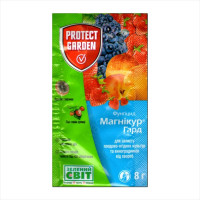Chickpea «Jordan»
This variety is recommended for growing in the steppe zone. It belongs to the Mediterranean subspecies, type kabuli. The variety is mid-season, the duration of the growing season is 95-105 days. The plant height is 50-60 cm. The beans and seeds are large, the form is intermediate, the surface is wrinkled, beige.

No questions about this product, be the first and ask your question.

The minimum temperature for germination of chickpea seeds is 2°-4°C, for seedlings 5°-6°C. Seedlings withstand short-term frosts down to minus 5°-8°С. The optimum temperature during flowering and seed filling is 25°C. The duration of the growing season is from 60 to 120 days. Chickpea is a long-day culture, so it cannot be sown in repeated crops. It requires a lot of moisture during the swelling of the seeds (more than 120% of its mass) and during the budding period. Chickpea does not make high demands on soils, it grows well on light textured soils, worse on alkaline and sandy soils.
Chickpea is not picky about its predecessors, the main condition for placing a crop is a slight weediness of the site and the absence of perennial rhizomatous weeds. It is not recommended to sow chickpeas after legumes and perennial grasses.
Fertilizers for chickpeas
The biological features of this culture allow the use of the aftereffect of mineral and organic fertilizers. The need for nitrogen is satisfied by the action of nodule bacteria. Nitrogination of chickpea seeds before sowing increases the yield of chickpea seeds by 1.0-1.3 c/ha (10.4-13.5%).
Soil tillage for chickpeas is the same as for early spring crops: one or two disking of the predecessor, deep plowing, leveling the fallow from autumn and early spring leveling the soil, cultivation immediately before sowing.
Sowing chickpeas
Immediately before sowing, chickpea seeds are treated with preparations of nodule bacteria. The legume-rhizobium symbiosis is very sensitive to pesticides, the use of which is not desirable in chickpea cultivation. All dressing agents have a negative effect on the formation of nodules and reduce their nitrogen-fixing activity. The treatment of chickpea seeds with chemicals in dry years reduces the yield by 6.3%. Instead of chemical fungicides against diseases, it is advisable to use preparations of microorganisms that are antagonists of phytopathogens: hetomic, phytoverm, batsifor, trichodermin.
Chickpeas are sown after early grain crops, when the soil has warmed up to 5-6 ° C to the seeding depth. Delay in sowing leads to crop shortages, a significant decrease in yield.
An important condition for obtaining friendly seedlings is the uniform placement of seeds at the same depth in the wet layer. The depth of seed placement with sufficient moisture is 6-8 cm, with an average of 9-10 cm, and when dry, the seeds must be placed in a wet layer, up to 15 cm is allowed. Mandatory rolling of sowing.
Chickpea crop care
Chickpea plants suffer greatly from the presence of weeds in crops, especially at the initial stages of vegetation. It should be taken into account that the use of soil herbicides can adversely affect the growth and development of nodule bacteria, which leads to a decrease in their activity. Therefore, it is necessary to carefully consider the choice of the sowing site and its thorough preparation. For the destruction of weed seedlings, one pre-emergence and two post-emergence harrowing should be used (destroys up to 70% of weed seedlings).
Pest control is carried out by spraying crops with insecticides in the budding phase - the beginning of flowering, again after 7 days.

















